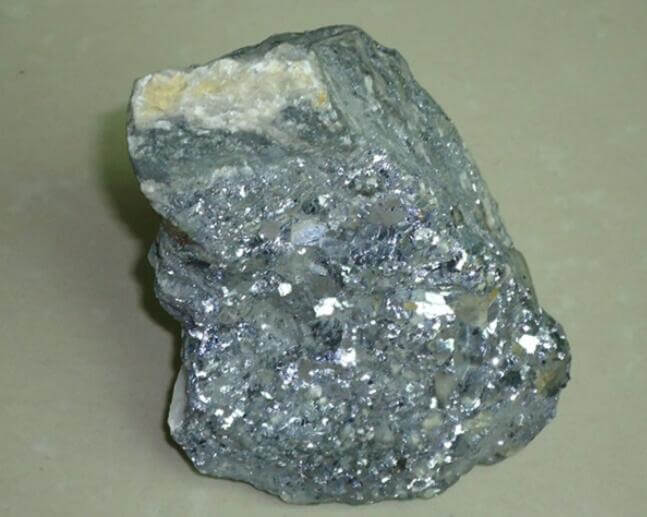We were established as the most specialized mineral processing equipment company since 1985.
Silver is a beautiful white metal. Silver has the best electrical conductivity, thermal conductivity, and reflectivity to visible light among all metals. It also has good ductility and plasticity and is accessible to polish and shape. Metals form alloys or pseudo-alloys. Silver also has strong anti-corrosion, organic acid, and alkali resistance and is not easily oxidized under ordinary temperature and humidity. Among the precious metals, silver has the most active chemical properties, and the most industrially valuable silver compounds are silver nitrate and silver halide.
Silver is widely distributed in nature, less in the elemental state, and mostly associated with other non-ferrous metal ores in the sulfide state. There are more than 200 known silver minerals and silver-containing minerals, but there are 12 minerals with important economic value as the main raw material for silver production:
The silver mentioned above minerals exist independently as coarse-grained single crystals embedded in gangue minerals and appear as fine joint crystals with galena, sphalerite, pyrite, chalcopyrite, etc., and also in a dispersed state occurrence in the above minerals.

For a long time, large quantities of silver of higher purity were used to make silver coins and ornaments. With the development of science and technology, silver has been gradually transferred from traditional currency and jewelry handicraft consumption to industrial application. At present, silver has been widely used in industries such as electronics, computers, communications, military industry, aerospace, film and television, and photography.
In the film and television, and photographic industries, because silver halides (silver bromide, silver chloride, silver iodide) and silver nitrate are particularly sensitive to light, they can be used to make black and white and color films required for printing and printing paper, photosensitive film for printing plate making, X-ray film for medical and industrial flaw detection and various special photosensitive materials used in aerial surveying and mapping, astronomy and space exploration and national defense scientific research.
In the electromechanical and electrical industries, silver is mainly used as electrical contact materials, resistance materials, brazing materials, temperature measurement materials, and thick film pastes in the form of pure metals and silver alloys. For example, electric contacts made of alloys such as silver copper, silver cadmium, and silver nickel can eliminate the disadvantages of general metal consumption, deformation, contact resistance, and bonding; low-voltage power switches, lifting devices, etc. Switches, heavy-duty relays, and electrical contact materials can be widely used in cutting-edge industries such as transportation, metallurgy, automation, and aerospace; in the thick film process, silver paste is used the earliest, has the best conductivity, and has strong adhesion to ceramics. In the medical and health industry, silver gold, silver mercury, silver tin alloy, etc., are critical dental materials.
The beneficiation method of silver-gold ores mainly uses flotation or cyanidation. The main reason for choosing flotation or cyanidation is the composition of silver minerals. Both flotation and cyanidation are acceptable when the silver minerals are mainly argentite and natural silver. It can only choose flotation for the ore containing complex cyanide minerals such as dark red silver ore, light red silver ore, and selenium silver ore. The recovery rate of flotation and cyanidation is different, and the recovery rate of the cyanidation method is generally high.
The separation effect is also very different in the recovery of lead-zinc-copper-associated silver ore due to its complex mineral composition, symbiotic relationship, intercalation characteristics, and oxidation degree. But in terms of beneficiation, flotation is a commonly used method. Generally speaking, the beneficiation recovery rate of lead-zinc-copper-associated silver ores is lower than that of silver-gold ores, generally between 50% and 70%.
The method of extracting silver is mainly to concentrate silver in heavy metal sulfide concentrates through ore dressing and extract them while smelting these heavy metals.
1. Silver, symbiotic with gold, is recovered during the cyanidation of gold.
2. Coarse-grained natural silver and silver-gold ore are processed by amalgamation or gravity separation-mercury.
3. Gravity separation or directly cyanide can enrich Argentite and horn silver ore ore.
4. Since the silver content in the ore is higher than that of gold. Silver and silver sulfide are more difficult to cyanide than gold. A higher concentration of cyanide solution is commonly used for the extraction of silver. The leaching time must be prolonged, the stirring intensity must be increased, and the aeration volume must be increased.
5. Silver chloride is easier to cyanide than silver sulfide, so silver sulfide ores are mostly chlorinated and roasted before cyanidation.
6. To extract silver from pyrolusite, reduction roasting must be carried out first to reduce the high-valent manganese oxide to manganese oxide and then cyanide to reduce the consumption of cyanide.
Extracting silver from anode slime is an important means of modern silver production.
We provide the best mine processing solution in the industry. We design our products with performance and efficiency, trusted over the years and recognized by many countries. Let’s get you started.

Copyright © 2022, JXSC All rights reserved.
Privacy Policy
Terms & Conditions
